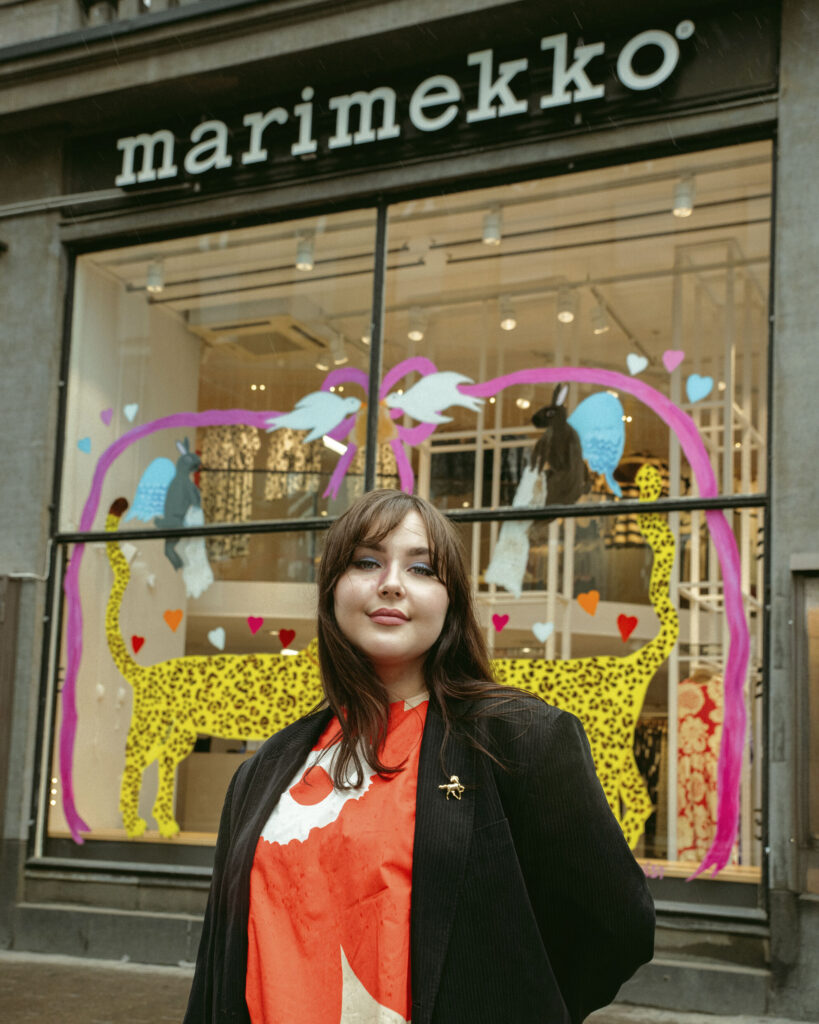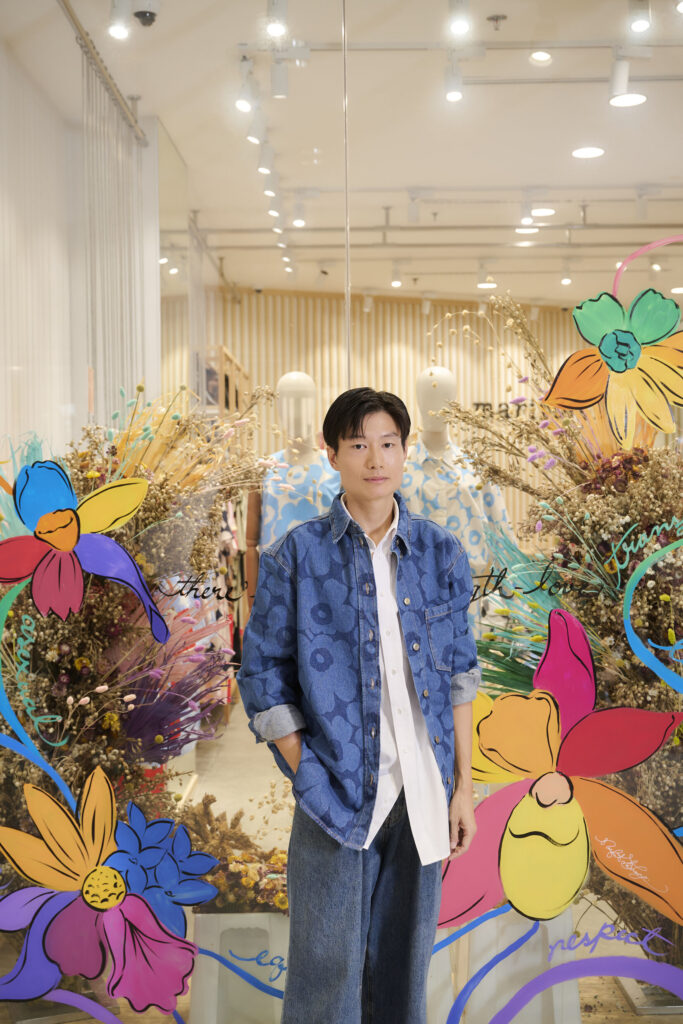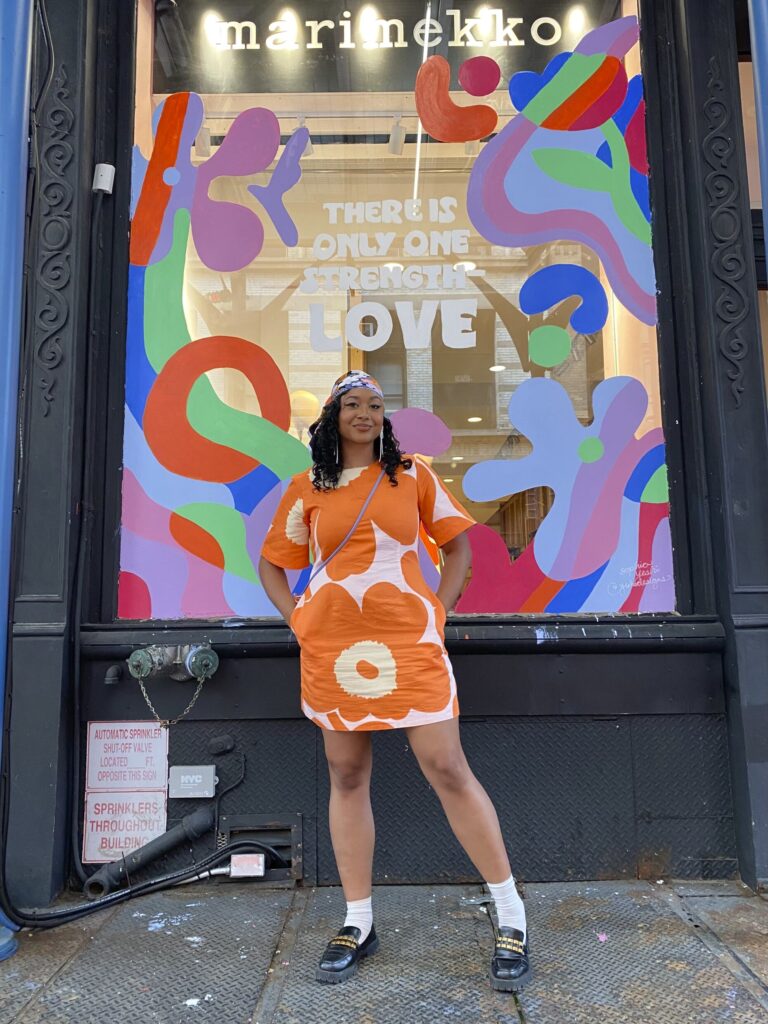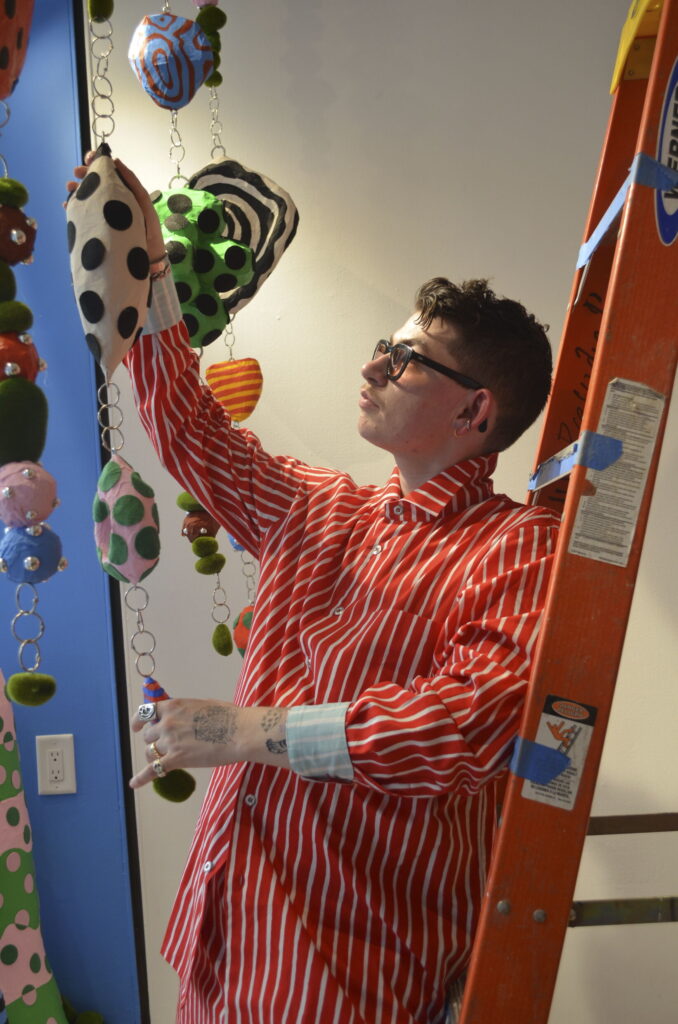“There is only one strength—love”. This Pride Month, LGBTQIA+ artists bring new meaning to Armi Ratia’s powerful words through bold window installations in Helsinki, New York City and Bangkok. Each installation is a bold tribute to Armi’s enduring belief in the power of love.
Meet the artists

Piiti Blomqvist, Helsinki
Piiti Blomqvist is a Helsinki-based artist who has been creating art since high school. After graduating from the Pekka Halonen Academy in 2020, art became her profession. Her work draws inspiration from experiences of girlhood and queer womanhood, animal characters, beautiful objects, and humor, blending sensitivity with reflections on good and evil.
Blomqvist works intuitively, often guided by emotion. She explores various painting techniques and ceramics, weaving in recurring themes of love, uncertainty, mischief, and a touch of diva energy. For her 2025 Pride window installation, she seeks to portray love in all its beauty and strength, especially through the lens of one woman loving another. The piece tells a story of falling in love and the deep sense of safety it can bring.
Piiti’s artwork for Pride Month 2025 is on display at Marimekko Aleksinkulma, Aleksanterinkatu 50, Helsinki. (IG: @piitiblomqvist)

Naraphat Sakarthornsap, Bangkok
Naraphat Sakarthornsap is a Bangkok-based visual artist whose work explores themes of social inequality and gender discrimination through photography and installation art. At the heart of his practice are flowers, used not just for their beauty but for their deeper symbolism and storytelling power.
Naraphat is known for creating visually striking pieces that invite viewers to look closer. Don’t believe what the flowers in front of you appear to be. Instead, look for the messages they are hiding. There may be a message about identity and the societal standards many quietly navigate every day.
Naraphat’s artwork for Pride Month 2025 will be exhibited in Marimekko Siam Discovery Store at Ground Floor, No. 989 Rama 1 Road, Pathumwan Subdistrict, Bangkok. (IG: @naraphat_s)

Sophia Yeshi, New York City
Sophia Yeshi, a Brooklyn-based illustrator and designer, specializes in creating impactful visual stories that champion diversity. Her designs for brands like Adobe and the Brooklyn Nets are known for their vibrant colors, playful touches, and thoughtful storytelling, all while maintaining cultural relevance.
She is thrilled to be designing this year’s Pride display for Marimekko’s SoHo store. Inspired by their bold yet minimal use of color and design, Sophia aims to encourage others to embrace their true selves fully. Through this display, her hope is to inspire viewers to live boldly, love freely, and celebrate the beauty of their authentic identities.
Sophia’s artwork for Pride Month 2025 is on display at Marimekko New York, 97 Wooster Street, NYC. (IG: @yeshidesigns)
Marimekko is proud to partner with Helsinki Pride
At Marimekko, we empower people to express themselves freely and embrace who they are. Fairness, equality and inclusivity have always been at the heart of our brand. We’re proud to once again be an official partner of Helsinki Pride.
Helsinki Pride Week runs from June 23 to 29, with the parade lighting up the streets on Saturday, June 28. In New York City, Pride Month culminates on June 29.

